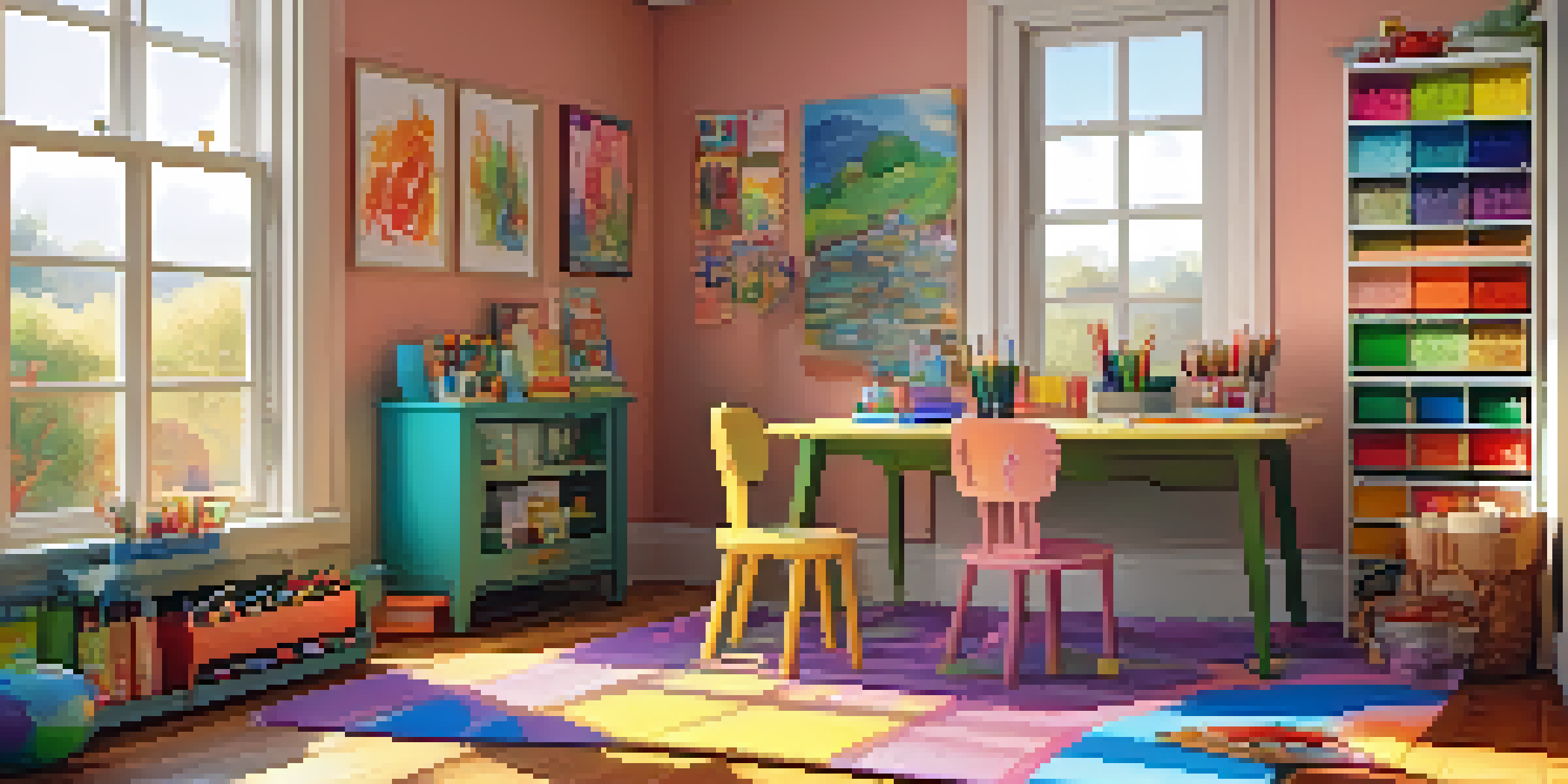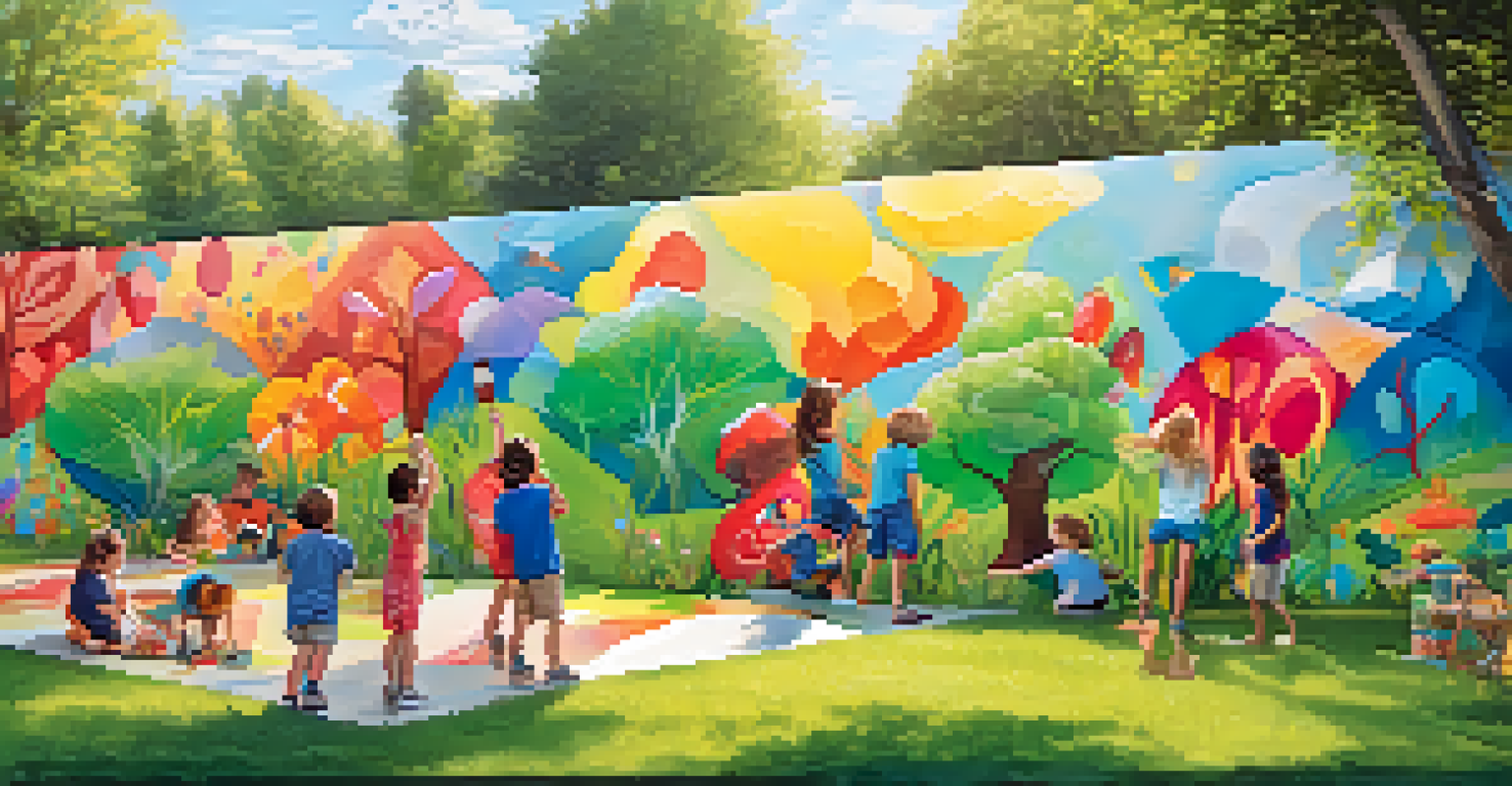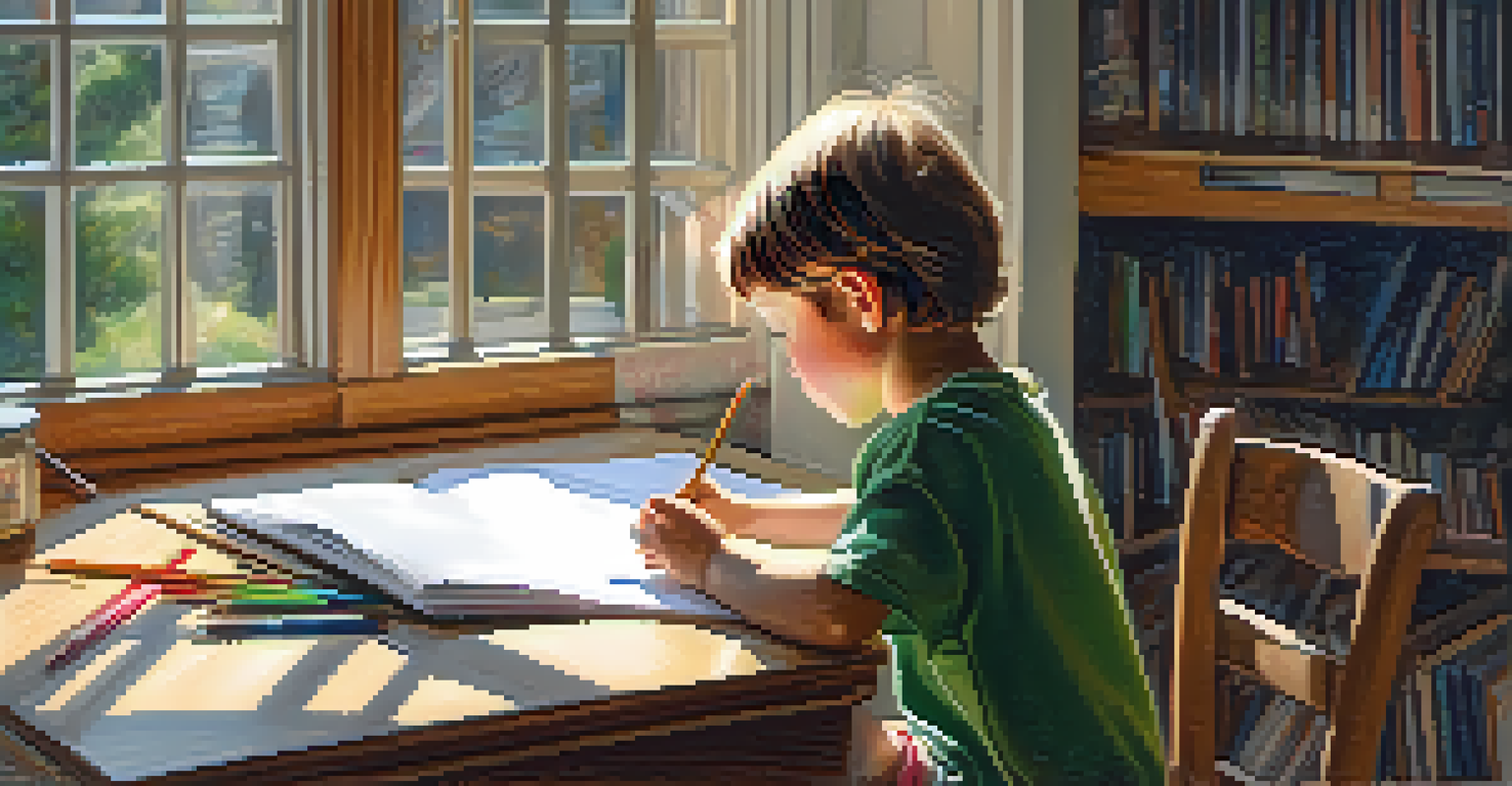Incorporating Art into Daily Routines for Children’s Growth

The Importance of Art in Child Development
Art plays a vital role in the growth of children, aiding in their emotional, social, and cognitive development. Engaging in creative activities allows children to express their feelings and thoughts, making them more aware of their emotions. This self-expression is crucial as it helps build their confidence and self-esteem, laying a strong foundation for their future interactions.
Every child is an artist. The problem is how to remain an artist once we grow up.
Moreover, art encourages critical thinking and problem-solving skills. When children create, they often face challenges that require innovative solutions, fostering resilience and adaptability. By navigating these artistic hurdles, kids learn to think outside the box, which is a valuable skill in all aspects of life.
Lastly, art promotes fine motor skills as children manipulate various materials, from crayons to clay. These activities strengthen hand-eye coordination and dexterity, essential skills that they will use throughout their lives in everyday tasks.
Creating an Art-Friendly Environment at Home
To encourage artistic exploration, it’s essential to create an inviting space at home. Designate a specific area for art activities, stocked with a variety of supplies such as paper, paints, and crafting materials. This dedicated space signals to your child that art is a priority and fosters a sense of ownership over their creative endeavors.

Incorporating art into daily routines can be as simple as allowing children to decorate their own spaces with their creations. Framing their artwork and displaying it prominently can boost their pride and motivation to create more. This not only enhances their environment but also makes them feel valued and appreciated.
Art Boosts Child Development
Engaging in art enhances children's emotional, social, and cognitive growth.
Additionally, consider integrating art into other routines, such as cooking or gardening. For example, kids can create colorful food presentations or design their own garden layouts, blending creativity with practical tasks and making everyday activities more enjoyable.
Art as a Tool for Emotional Expression
Children often struggle to articulate their feelings verbally, but art provides a powerful outlet for emotional expression. Drawing, painting, or sculpting can help them process their emotions, whether it’s joy, sadness, or frustration. This creative process can serve as a therapeutic release, aiding in their emotional well-being.
Art is the most beautiful of all lies.
For instance, if a child is feeling anxious about starting school, drawing their feelings can help them visualize and confront those fears. This kind of expression not only validates their feelings but also opens up opportunities for discussions about their emotions with caregivers or teachers.
Encouraging children to keep an art journal can further enhance this practice. By regularly documenting their thoughts and feelings through art, they develop greater emotional awareness and can track their growth over time, making it a valuable tool for self-reflection.
Boosting Social Skills Through Collaborative Art Projects
Art isn’t just a solitary activity; it can also be a wonderful way for children to develop social skills. Engaging in collaborative art projects teaches kids the value of teamwork and communication. Working together to create a mural or a group sculpture allows them to share ideas, negotiate roles, and respect different viewpoints.
These activities also foster empathy as children learn to appreciate the perspectives and contributions of their peers. Sharing materials and space requires patience and understanding, essential components of building strong relationships. Such collaborative experiences can lead to lasting friendships and a sense of community.
Creating an Art-Friendly Home
Designating a space for art at home encourages creative exploration and ownership.
Additionally, art classes or community workshops provide excellent opportunities for social interaction. These environments encourage children to meet new friends and learn from one another, enriching their social experiences while pursuing their creative passions.
Incorporating Art into Learning Activities
Integrating art into traditional learning activities can make education more engaging for children. For example, when studying history, children can create visual timelines or dioramas that bring historical events to life. This hands-on approach not only solidifies their understanding but also makes learning more enjoyable.
Similarly, art can be used to enhance literacy skills. Encouraging children to illustrate their favorite stories or write and illustrate their own books combines creativity with reading and writing, fostering a love for literature. This multi-faceted approach helps children retain information better and keeps their interest alive.
Using art as a tool for teaching math concepts can also be beneficial. Activities like creating geometric designs or measuring for a craft project provide practical applications for mathematical principles, making these subjects less intimidating and more relatable.
Encouraging Exploration of Different Art Forms
Exposing children to various art forms expands their creative horizons and helps them discover their interests. From painting and drawing to sculpture and digital art, each medium offers unique experiences and skills. Encouraging your child to explore these diverse forms can ignite a lifelong passion for creativity.
Consider introducing them to local art classes, workshops, or online tutorials that focus on different techniques. This exposure not only enhances their skills but also helps them appreciate the diversity of artistic expression. By experimenting with various forms, children can find what resonates with them personally.
Art Enhances Learning Engagement
Incorporating art into learning activities makes education more interactive and enjoyable.
Additionally, visiting art galleries or museums can inspire your child and provide them with a broader cultural context. Observing different styles and techniques can spark new ideas and motivate them to try their hands at new projects, fostering a sense of curiosity and exploration.
The Role of Parents in Supporting Artistic Growth
As parents, your involvement can significantly influence your child's artistic development. Showing interest in their art projects, asking questions, and providing encouragement can boost their confidence and motivation. Your support is vital in helping them understand that their creativity is valued and appreciated.
Setting aside dedicated art time together can also strengthen your bond. Whether it’s a weekend painting session or a weekday craft night, these shared experiences create memories and foster a collaborative spirit. Plus, it allows you to model creativity and demonstrate the importance of self-expression.

Lastly, don’t forget to celebrate their artistic achievements. Whether it’s displaying their artwork at home or sharing it with family and friends, recognition can motivate them to keep creating. This acknowledgment reinforces the idea that their creativity matters, paving the way for a lifetime of artistic exploration.